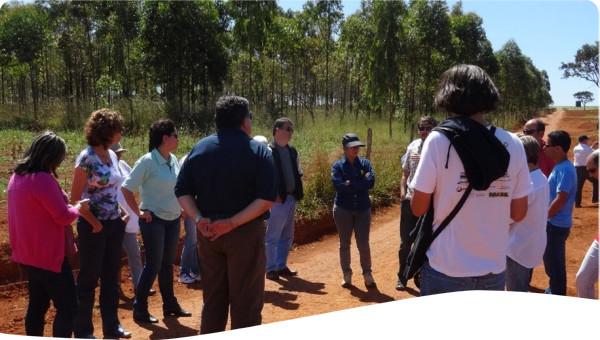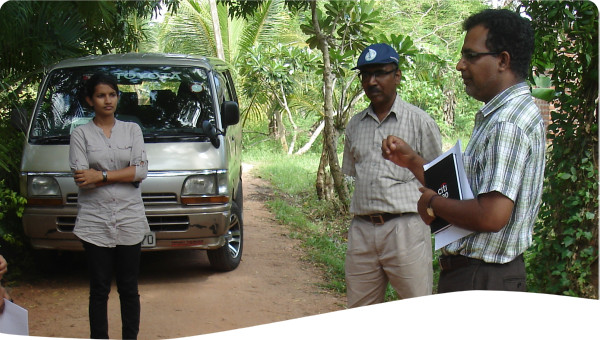Initial success resulted in the joint forest management strategy in Sukhomajiri being expanded. Unfortunately the successes of the original project were not replicated and the scaling-up efforts ended in rapid siltation. This has led to a discussion of possible IWRM implementation in the area. The key lesson learnt from this case is the importance of community involvement for successful community activity implementation.
The forests in the Siwalik Hills of Haryana, India- administered by the Morni-Pinjore Forest Division, are critical for mitigating soil erosion and this was realised during the early 1970s when grazing of cattle and fuelwood collection degraded the forests and resulted in increased siltation of the Sukhna reservoir in the capital Chandigarh. Studies revealed that most of the run-off was coming from the Sukhomajiri watershed and the Haryana Forest Division (HFD) was charged with finding a solution to the problem. In the late 1970s a successful joint forest management strategy was established in Sukhomajiri. By initiating a dialogue with villagers, key issues were identified which led to the construction of earthen dams for the provision of irrigation water.
This in turn led to increased fodder production that reduced the grazing pressure on nearby forests and therefore improved the forest condition, reducing sedimentation of a nearby reservoir.
With this success, the project was expanded throughout the region between 1990 and 1998. Unfortunately the successes of the original project were not replicated and the scaling-up efforts ended in rapid siltation with only 20% of the dams functioning by 2000.
The reasons for these failures are complex and were explored by a recent study of 28 community water user associations, or Hill Resource Management Societies (HRMS), in the Morni-Pinjore Forest Division of Haryana.
To scale-up the Sukhomajiri model, the Haryana Forest Division established a well-defined series of institutional rules to govern the management of water from earthen dams. Through a series of community consultations, six key features were established:
- Water user associations were reformed as Hill Resource Management Societies (HRMS) to manage and lease the rights for water, fibre, and fodder grasses.
- A system of tradable water permits was developed to enable landless households to gain a share of water from the dams.
- Profits from the sale of HRMS water and grasses were directed to community development projects.
- The HFD facilitated annual elections of the HRMS managing committee.
- Membership issues, such as how to share revenue between multiple villages and the placement of women on the managing committee, were addressed.
- Where joint management existed between the HFD and HRMS, profits were shared.
Water from the dam was shared equally among all families that paid an irrigation service fee. These funds were collected by the HRMS or individual farmers who lease the rights at annual water auctions. The successful bidder then has an annual contract to distribute water, collect fees, and maintain the dam. A portion of the proceeds are deposited with the HRMS for community development activities. Unfortunately, several problems disrupted attempts to scale-up the Sukhomajiri watershed model. First the HRMS’ profits from the sale of fiber grass decreased between 1996 and 2000 due to changes in national import policies.
Primarily concerned with resource management institutions, the research revealed that heterogeneity of community groups, as measured by household endowment indicators (i.e. average land irrigated, size of land owned, number of livestock and family size), was a key factor in the success or failure of HRMS and IWRM.
Successful regions had clearly defined social roles, be it patron-client or caste-based, and often used a private contractor to allocate water resources and collect user-fees. Therefore a heterogeneous mix of household endowments, combined with interested stakeholders, is a positive precondition.
By examining the existing social institutions and physical conditions of an area, the possibility of IWRM success may be assessed. For example, participation and rule-compliance were affected by access to irrigation alternatives, e.g. tubewells; the distribution of land-holdings, i.e. at the head or tail of irrigation networks; and the share of household income from non-agricultural sources.
Once community resource strategies are in place, managers must be aware of the potential impacts that larger national policies (e.g. import reforms altering commodity prices and in turn, village income profiles) and changing internal dynamics (e.g. increased workload for women without participation in management decisions) can have on long-term success.
Communities need to have an interest in the successful operation of dams and these interests are shaped by a variety of political, social and environmental factors
These preconditions, such as historical experience and natural endowments, are key to the success of collective action
Heterogeneous groups, with clearly defined social roles, experienced less management conflict than groups with homogeneous household endowments
The effectiveness of community water resource management can be affected by internal (e.g. lack of participation from women, despite large stake in outcome, may harm long-term sustainability of policy) and external (e.g. national trade policies which alter water-related commodities) forces.
 Case studies
Case studies

